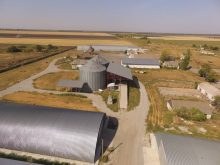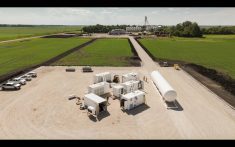Morocco has a large fertilizer industry with huge production capacity and international reach. It is one of the world’s top four fertilizer exporters, following Russia, China and Canada.
Morocco has advantages in phosphorus fertilizer production. It possesses more than 70 per cent of the world’s phosphate rock reserves from which to derive those fertilizers.
This makes Morocco a gatekeeper of global food supply chains because all food crops require phosphorus to grow. Unlike other finite resources, such as fossil fuels, there is no alternative to phosphorus.
Read Also

The new spin on farm legacy
Farmers are starting to think differently about the future of their farms in Western Canada. What does this mean for the next generation and farm succession planing?
In 2021, the global phosphorus fertilizer market amounted to about US$59 billion. In Morocco, the sector’s 2020 revenues amounted to $5.94 billion. Office Chérifien des Phosphates, the producer owned by the Moroccan state, accounted for about 20 per cent of the kingdom’s export revenues. It is also the country’s largest employer, providing jobs for 21,000 people.
By 2026, Morocco plans to expand the sector, adding another 8.2 million tonnes of phosphorus fertilizer to the 12 million tonnes already produced annually.
The state company recently announced it would increase its 2022 fertilizer production by 10 per cent. This would pump an additional 1.2 million tonnes into global supply by the end of the year.
However, Morocco also faces new challenges. Its production of fertilizer is threatened by daunting environmental and economic situations that include the COVID-19 pandemic and the supply chain disruptions that followed.
The timing to address these is crucial, given the impacts of Russia’s invasion of Ukraine.
Russia is the world’s largest fertilizer exporter – 15.1 per cent of total exported fertilizers come from that country – and fertilizer represents one of the greatest vulnerabilities for Europe and Africa.
The EU27 (the 27 member states of the European Union) depends on Russia for 30 per cent of its fertilizer supply. Russia’s advantageous position is amplified by its status as the world’s second-largest natural gas producer. Gas is a main component of both phosphorus and nitrogen fertilizers.
Because of this, the invasion of Ukraine has serious implications for global food security, both in terms of supply and also because fertilizer can be used as an economic weapon or tool.
Morocco could become central to the global fertilizer market and a gatekeeper of the world’s food supply that could offset the attempt to use fertilizer as a weapon.
About 54 per cent of phosphate fertilizers bought in Africa come from Morocco. Moroccan fertilizers also account for major domestic market shares in India (50 per cent), Brazil (40 per cent) and Europe (41 per cent). India and Brazil have already reached out to Morocco to fill supply gaps.
Constraints
How well Morocco manages challenges to the industry will affect both its own economic development and stability of global food supplies.
Phosphate extraction and fertilizer production uses a lot of energy and water. Morocco’s industry consumes about seven per cent of its annual energy output and one per cent of its water.
But Morocco is also among the countries suffering the most from water scarcity because of a dry climate, high water demand, climate change and reservoir contamination and siltation.
It is trying to address this through a National Water Plan that envisages new dams and desalination plants and expansion of irrigation networks, among other measures, at an estimated cost of $40 billion.
There is also the cost of natural gas.
Diammonium phosphate, the most popular type of phosphorus fertilizer worldwide, is composed of 46 per cent phosphorus and 18 per cent nitrogen. Natural gas accounts for at least 80 per cent of the variable cost of nitrogen fertilizer.
This means the price of natural gas massively affects production costs of fertilizer. Morocco has few natural gas resources and prices have soared.
Alternative energy
Renewable energy may be part of the solution. Morocco has considerable solar and wind resources that could be used for fertilizer manufacturing.
In 2020, the state’s fertilizer company covered 89 per cent of its energy needs by co-generation (producing two or more forms of energy from a single fuel source) and renewable energy sources. Its aim is to eventually cover all of its energy needs in this way.
Renewable energy could also be used within the fertilizer itself. Instead of importing ammonia derived from natural gas, Morocco could produce its own using hydrogen produced from domestic renewable energy resources.
According to the state company, 31 per cent of its water needs are met with “unconventional” water resources, including treated wastewater and desalinated seawater.
Morocco’s growing reliance on desalination plants to satisfy industrial, agricultural and residential needs will require sizeable new investments in power generation from renewable energy sources. Desalination plants require 10 times the amount of energy to produce the same volume of water as conventional surface water treatment.
To sustain operations and expand green ammonia production, Morocco will have to strike a balance between its fertilizer exports, its drive to expand high-value agricultural exports and the provision of drinking water to its population.
Using its large solar energy resources to power green hydrogen and green ammonia production, along with desalination, Morocco could yet escape the vicious cycle of the upward spiralling of prices in the food-energy-water nexus.
– Prof. Michaël Tanchum teaches international relations and political economy of the Middle East and North Africa at Universidad de Navarra, Spain. He is also senior fellow at the Austrian Institute for European and Security Policy (AIES).















